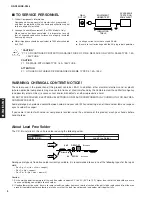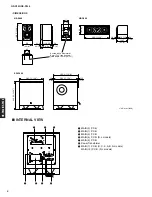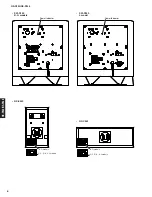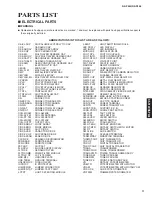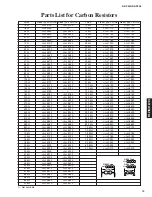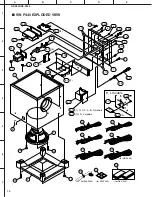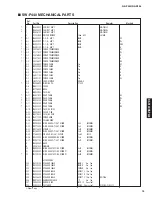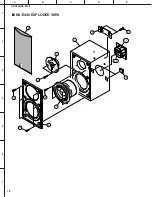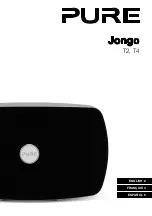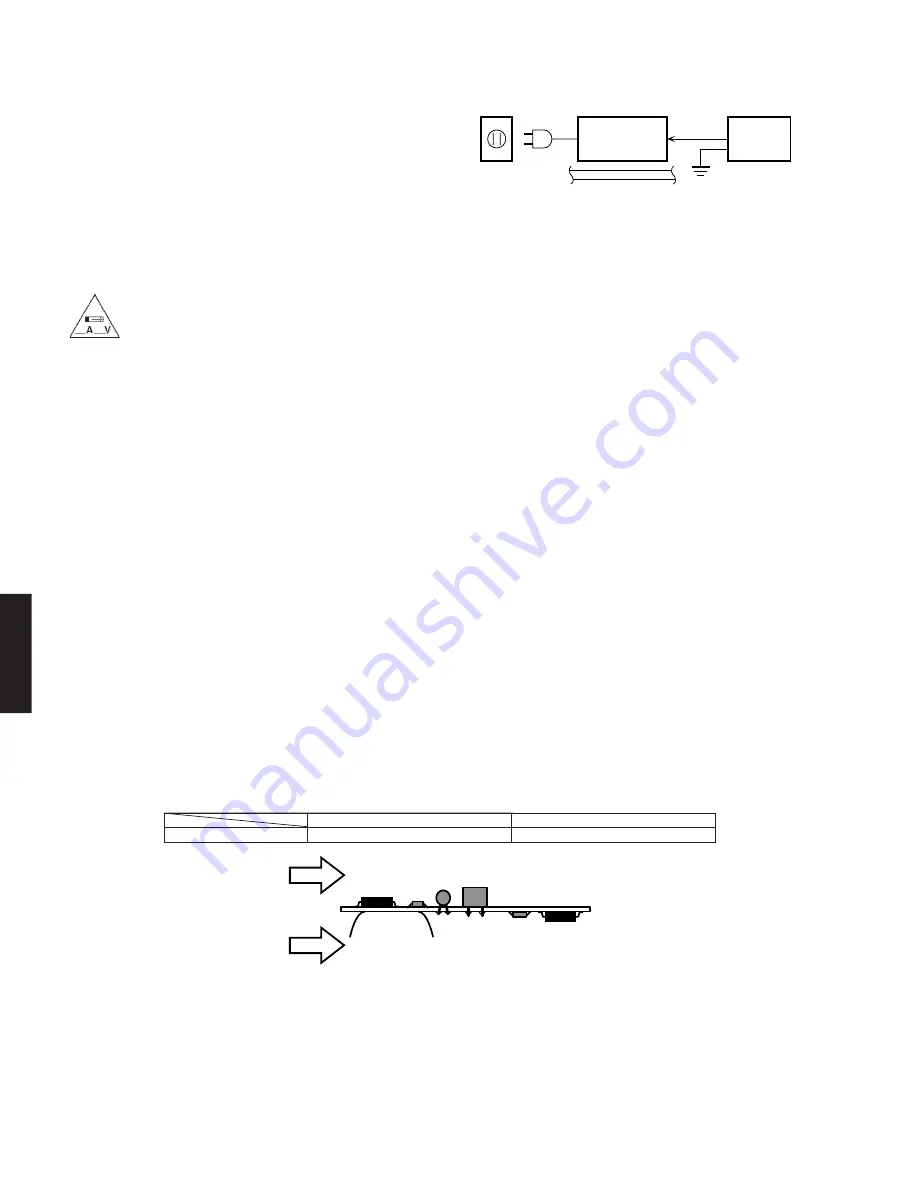
NS-P440/NS-P446
2
NS-P440/NS-P446
WALL
OUTLET
EQUIPMENT
UNDER TEST
AC LEAKAGE
TESTER OR
EQUIVALENT
INSULATING
TABLE
■
TO SERVICE PERSONNEL
1. Critical Components Information
Components having special characteristics are marked
s
and must be replaced with parts having specifications equal
to those originally installed.
2. Leakage Current Measurement (For 120V Models Only)
When service has been completed, it is imperative to verify
that all exposed conductive surfaces are properly insulated
from supply circuits.
●
Meter impedance should be equivalent to 1500 ohms shunted
by 0.15
µ
F.
“CAUTION”
“F1: FOR CONTINUED PROTECTION AGAINST RISK OF FIRE, REPLACE ONLY WITH SAME TYPE 1.6A,
125V FUSE.”
CAUTION
F1: REPLACE WITH SAME TYPE 1.6A, 125V FUSE.
ATTENTION
F1: UTILISER UN FUSIBLE DE RECHANGE DE MEME TYPE DE 1.6A, 125V.
WARNING: CHEMICAL CONTENT NOTICE!
The solder used in the production of this product contains LEAD. In addition, other electrical/electronic and /or plastic
(where applicable) components may also contain traces of chemicals found by the California Health and Welfare Agency
(and possibly other entities) to cause cancer and/or birth defects or other reproductive harm.
DO NOT PLACE SOLDER, ELECTRICAL/ELECTRONIC OR PLASTIC COMPONENTS IN YOUR MOUTH FOR ANY REA-
SON WHATSOEVER!
Avoid prolonged, unprotected contact between solder and your skin! When soldering, do not inhale solder fumes or expose
eyes to solder/flux vapor!
If you come in contact with solder or components located inside the enclosure of this product, wash your hands before
handling food.
●
Leakage current must not exceed 0.5mA.
●
Be sure to test for leakage with the AC plug in both polarities.
About Lead Free Solder
Side A
Side B
SMT
REFLOW
Process
MI
FLOW
Process
Solder Dip
Among some types of lead free solder currently available, it is recommended to use one of the following types for the repair
work.
• Sn + Ag + Cu (tin + copper)
• Sn + Cu (tin + copper)
• Sn + Zn + Bi (tin + zinc + bismuth)
Caution:
1. As the melting point temperature of the lead free solder is about 30
°
C to 40
°
C (50
°
F to 70
°
F) higher than that of the lead solder, be sure
to use a soldering iron suitable to each solder.
2. If lead solder must be used, be sure to remove lead free solder from each terminal section of the parts to be replaced and from the area
around it completely before soldering, or make sure that the lead free solder and lead solder melt together fully.
The P.C.B.s installed in this unit are soldered using the following solder.
MAIN P.C.B.
Side A
–
Side B
Lead Free Solder


